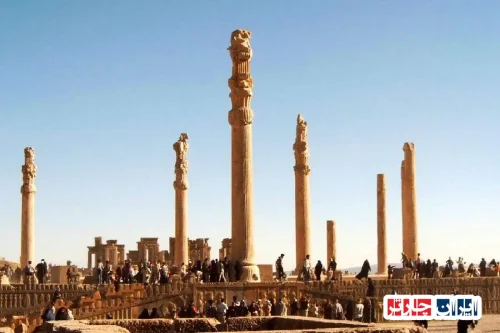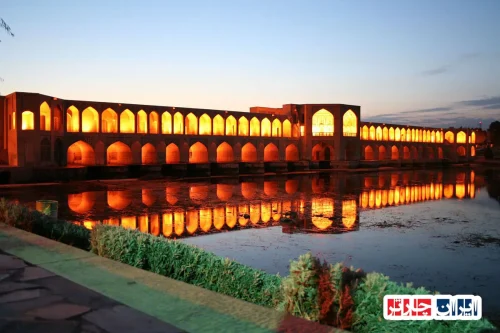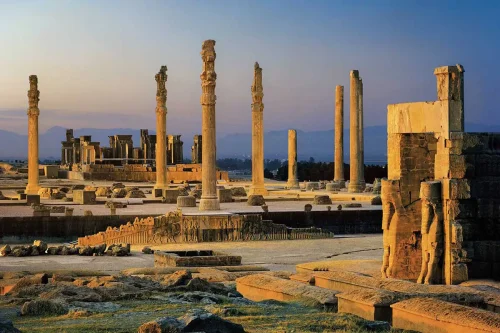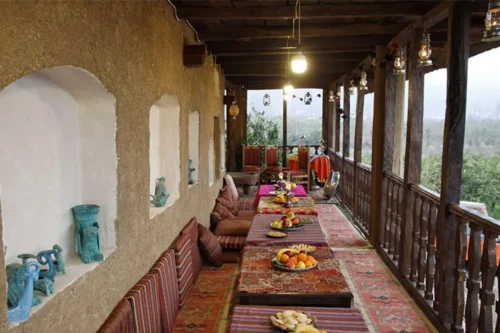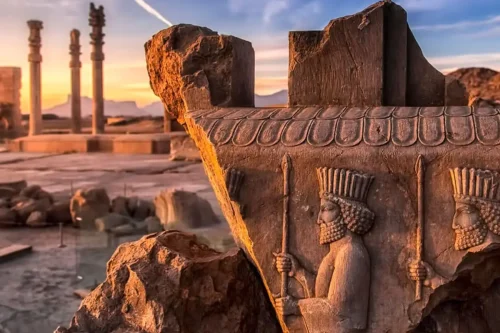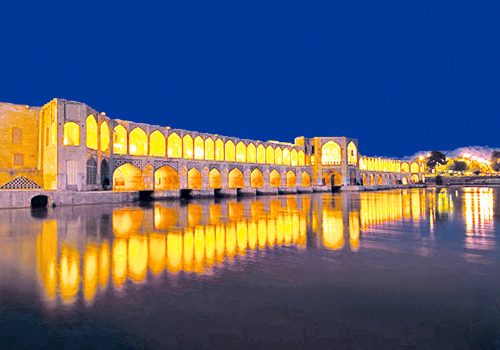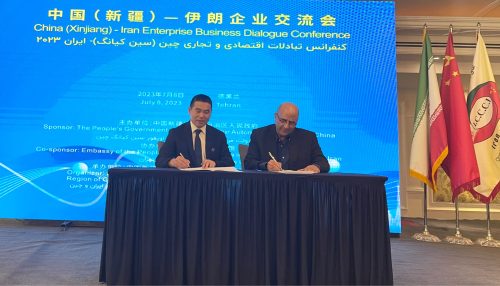Bridging Nowruz and Iftar: A Fusion of Persian and Islamic Traditions

Deep Connection Between Nowruz and Iftar in Iranian-Islamic Culture
In the heart of Iranian-Islamic traditions, the celebration of Nowruz and the ritual of Iftar stand as two profound symbols of renewal and unity. Over centuries, these practices have intertwined to form a cultural tapestry that reflects both spiritual rebirth and communal gathering. As the season of spring ushers in a rejuvenation of nature, families and communities come together to observe Nowruz with vibrant celebrations that include symbolic rituals, ancient customs, and lively festivities. At the same time, the moment of Iftar—when the day’s fast is broken—gathers people around sumptuous meals and meaningful conversations that emphasize compassion, shared values, and social harmony. This dual celebration, often described as Bridging Nowruz and Iftar: A Fusion of Persian and Islamic Traditions, not only encapsulates the essence of seasonal change but also acts as a metaphor for the cyclical regeneration of human spirit and nature. As participants reminisce about age-old customs while welcoming contemporary influences, the interplay between the welcoming of spring and the breaking of fast becomes a powerful reminder of life’s continuous renewal. Through storytelling, communal prayers, and carefully arranged ritualistic displays, both Nowruz and Iftar foster the transmission of deep-rooted values, celebrate human resilience, and underscore the importance of family, community, and cultural legacy.
Historical Significance and Symbolism of Nowruz in the Renewal of Nature
Dating back thousands of years, Nowruz has served as the principal celebration of nature’s rebirth in a land steeped in history and myth. This ancient festival marks the arrival of spring and the opportunity for a fresh start—a moment when the earth itself is reborn through budding flora, clearer skies, and the promise of renewed life. Embedded in the traditions of Persian heritage, Nowruz welcomes migration from the cold dormancy of winter into the warm embrace of a new cycle of growth. Families gather to prepare elaborate tables adorned with symbolic items such as sprouted greens, colorful eggs, and mirrors that reflect inner light. These elements are imbued with meanings of hope, prosperity, and continuity. Beyond its ritualistic charm, Nowruz carries an inspirational message about the persistence of life, echoing the enduring human spirit that thrives even after periods of hardship. Traditions passed down from one generation to the next encourage a reflective pause, where communities express gratitude for the blessings of nature and life itself. In many ways, the celebration of Nowruz—especially when considered alongside the communal break that is Iftar—reinforces the notion of Bridging Nowruz and Iftar: A Fusion of Persian and Islamic Traditions, symbolizing the harmonious balance between human endeavor and the forces of nature.
Spiritual Purity and the Manifestation of Unity in Iftar Celebrations
Iftar is much more than the ritual of breaking a daily fast; it is a moment rich with spiritual significance and communal unity. As the sun sets, families, friends, and neighbors gather to share a meal that symbolizes the collective triumph over personal sacrifice and hunger. This sacred hour serves as a time to reflect on personal growth, gratitude, and the imperatives of empathy. The simple act of partaking in Iftar goes beyond nutritional replenishment—it is a unifying ceremony that bridges differences, cultivates compassion, and brings individuals closer through shared experience. As dishes are passed around and stories exchanged, the layers of time-honored tradition weave together the core values of generosity, tolerance, and solidarity. Participants are reminded of the importance of community and the power of coming together in celebration of life’s blessings. The idea of Bridging Nowruz and Iftar: A Fusion of Persian and Islamic Traditions finds a fresh expression here, as both ceremonies underscore the renewal of spirit and the essential bonds that tie families and communities together. In this context, Iftar marks not only the end of a day of abstinence but also a beginning—a hopeful reminder that unity and mutual respect can light the path forward in both personal and collective journeys.
The Symbolism of Haft-Sin: A Comprehensive Iconography in Nowruz Traditions
One of the most visually captivating aspects of Nowruz is the ceremonial arrangement known as Haft-Sin, a symbolic table setting that consists of seven items, each beginning with the Persian letter “س” with deeply rooted metaphorical significance. Every element placed on the table—from sprouting greens that symbolize rebirth, to vinegar representing the passage of time—carries an enduring message of life, resilience, and continuity. This meticulously arranged display serves as a microcosm of nature’s bounty and humanity’s eternal pursuit of hope. Each component of the Haft-Sin is carefully selected to reflect important principles and values such as health, love, fortune, and wisdom. The ceremony of setting up Haft-Sin transforms homes into sanctuaries of reflection where every item contributes to narrating a story of ancient wisdom and cultural pride. In a broader context, when considered alongside the communal practice of Iftar, this setting becomes a tangible expression of Bridging Nowruz and Iftar: A Fusion of Persian and Islamic Traditions, symbolizing the interconnection of ritual, memory, and contemporary celebration. As families dress their tables with vibrant symbols of life’s enduring cycle, they not only honor a cherished tradition but also reaffirm their commitment to preserving and passing on deep cultural legacies.
Harmonizing Nowruz and Iftar: Reinvigorating Core Human Values
At the confluence of seasonal renewal and religious observance lies a unique synergy between Nowruz and Iftar that breathes new life into core human values. While Nowruz heralds the regeneration of nature, Iftar stands as a moment to break both physical and metaphorical fasts, inviting individuals to renew bonds and embrace fresh beginnings. This harmonious alignment of two distinctive celebrations underlines the universal principles of hope, compassion, and unity that transcend time and cultural boundaries. In communities across the region, both events are marked by acts of charity, communal sharing, and reflective introspection. Rituals associated with each ceremony serve not only as a tribute to ancestral practices but also as a guide for modern living—inspiring people to live with generosity and mindfulness. The ethos inherent in both Nowruz and Iftar resonates deeply with the notion of Bridging Nowruz and Iftar: A Fusion of Persian and Islamic Traditions, a concept that encapsulates the spirit of embracing change while holding on to time-honored values. As elders recount historical anecdotes and young ones listen with wonder, the intermingling of these traditions generates a rich narrative that informs everyday decisions and shapes collective hope for a better tomorrow.
Traditional Rituals as a Pathway to Rediscovering Human Values
The ancient rituals embedded in the celebrations of Nowruz and Iftar offer more than ceremonial splendor—they provide a structured pathway back to the values that fortify human connection and moral clarity. Generations have preserved these traditions, knowing that they serve as a living archive of the cultural, spiritual, and social principles that have long sustained communities. The meticulous process of renewing old customs, whether it be in the preparation of a symbolic table or the communal gathering at sunset, encourages a deep reflection on the principles of respect, gratitude, and solidarity. Every dish served, every prayer uttered, and every symbolic act performed during these celebrations becomes a thread in the intricate fabric of a civilization’s heritage. This collective memory, enriched by the ceaseless cycle of ritual and reflection, plays a crucial role in helping societies rediscover and reclaim core human values that might otherwise be obscured by the pace of modern life. In this continuous dialogue between past and present, Bridging Nowruz and Iftar: A Fusion of Persian and Islamic Traditions emerges as a recurring theme, reminding all participants of the timeless lessons embedded in every ritual and every shared moment of introspection.
Cultural Dynamism Through the Interplay of Nowruz and Iftar
Cultural dynamism is vividly expressed in the way communities embrace and reinterpret the traditions of Nowruz and Iftar to suit contemporary sensibilities, while still remaining faithful to their ancient roots. As society evolves, these celebrations continue to act as dynamic platforms where age-old customs are infused with modern relevance, giving new meaning to long-established rites. Whether expressed through art, music, or innovative culinary interpretations, the fusion of capabilities borne from diverse influences underlines the versatility and adaptability of these time-honored practices. In gatherings that celebrate both the coming of spring and the sanctity of concluding a day’s fast, legends and visual symbols are reimagined to reflect a world that is at once steeped in tradition and eager to welcome change. This modern reinterpretation does not dilute the intrinsic values of the rituals; rather, it reinforces them by allowing methods of expression to evolve in harmony with the changing societal landscape. Within these vibrant celebrations, the spiritual and energetic pulse of the community is palpable, ever echoing the sentiment of Bridging Nowruz and Iftar: A Fusion of Persian and Islamic Traditions—a phrase that encapsulates the ongoing dialogue between cultural heritage and innovative expression.
Cultural Heritage as a Beacon for Cross-Civilizational Dialogue
The rich cultural heritage originating from Nowruz and Iftar serves as an invaluable beacon for dialogue across civilizations, offering insights into the shared human experience and aspirational ideals. These celebrations are more than regional observances; they are dynamic narratives that tell stories of resilience, unity, and the profound interplay between tradition and modernity. By drawing upon centuries-old customs and adapting them to meet the needs of a rapidly globalizing world, communities have managed to create spaces where cultural exchange is not only possible but celebrated. As literature, music, art, and culinary traditions are shared and adapted across borders, the inherent messages of hope, renewal, and unity become tools for fostering mutual understanding among diverse peoples. The ongoing synthesis manifested in the celebrations of Nowruz and Iftar underlines the concept of Bridging Nowruz and Iftar: A Fusion of Persian and Islamic Traditions, where the past is honored and the future is collaboratively shaped. In these exchanges, there is an acknowledgment that while boundaries may separate peoples geographically or culturally, certain timeless values connect us all and drive the pursuit of a more harmonious and inclusive global society.
Bridging Tradition and Modernity: The Enduring Legacy of Nowruz and Iftar
In a world where rapid advancement often outpaces cultural remembrance, the shared legacy of Nowruz and Iftar stands as a testament to the enduring power of tradition. These celebrations, deeply embedded in the collective consciousness, have evolved over the centuries to incorporate not only ancient rituals but also modern expressions of celebration and unity. Embracing innovative practices while maintaining core values, communities have found a balance that allows them to honor the past without forsaking the promise of the future. This synthesis has given rise to a cultural narrative that is both timeless and adaptable, one that carries forward the spirit of renewal and communal harmony. As families gather to celebrate the arrival of spring and the meaningful breaking of fast, they are continually reminded of the interconnections that define their identity—a phenomenon aptly captured by the evolving mantra of Bridging Nowruz and Iftar: A Fusion of Persian and Islamic Traditions. In this ever-evolving dialogue between tradition and modernity, every gesture, every shared meal, and every symbolic act serves to reinforce a message of hope, unity, and an unwavering commitment to cultural continuity.
Frequently Asked Questions
- What is the meaning of Nowruz?
- Nowruz is the celebration of the arrival of spring and the renewal of nature. It symbolizes nature’s rebirth and a fresh start in people’s lives.
- Are Iftar and Nowruz related?
- Yes, both celebrations emphasize unity and the rejuvenation of the spirit, sending a message of togetherness and peace to the community.
- What is Haft Seen?
- Haft Seen is a symbolic arrangement consisting of seven items, each representing different aspects of life, hope, and nature.
- What role does Iranian-Islamic culture play in the Nowruz celebration?
- Nowruz reflects the rich heritage of Iranian-Islamic culture, conveying timeless human, historical, and ethical values.
- What message does Iftar convey to the community?
- Iftar is a reminder of social unity and offers an opportunity for people from all walks of life to come together without any distinction.
- How did the history of Nowruz begin?
- Nowruz has ancient roots dating back several millennia. It is part of the heritage of early civilizations in Iran and has always been celebrated as a symbol of nature’s renewal.
- How do traditional celebrations influence social life?
- Traditional celebrations like Nowruz and Iftar strengthen national identity, boost community cohesion, and pass cultural values on to future generations.
- Why is it important to know the history of Nowruz?
- Understanding the history of Nowruz helps us appreciate enduring cultural values and age-old traditions, enriching our daily lives.
- What signs of nature’s creation can be observed during Nowruz?
- During Nowruz, you can witness the blossoming of trees, the revitalization of nature, and the appearance of new, vibrant colors that mark a fresh beginning.
- Is Iftar celebrated only by specific groups?
- Iftar is an inclusive celebration where everyone in the community comes together, creating a warm atmosphere for both the affluent and less privileged.
- How does the Nowruz celebration contribute to cultural growth?
- Celebrating Nowruz honors ancient traditions and fosters the transmission of cultural values while enhancing social unity and cohesion.
- What impact does Nowruz have on Iran’s tourism industry?
- Nowruz attracts both domestic and international visitors, boosting tourism and offering a unique platform to showcase Iran’s distinctive attractions.
- What role do cultural centers play in preserving traditional customs?
- Cultural centers play a crucial role by organizing traditional events and ceremonies, thereby preserving and transmitting cultural heritage to future generations.
- How are human values conveyed through traditional celebrations?
- Traditional celebrations foster heartfelt interactions among community members, promoting values such as kindness, empathy, and mutual respect.
- Why is cultural heritage registration by international organizations important?
- Registering cultural heritage with international organizations helps preserve time-honored traditions and shares these values with the global community.
- What is the message of Iran Charter?
- Iran Charter is dedicated to providing travel and tourism services that promote Iranian cultural and human values to travelers and culture enthusiasts.
- How do these traditions contribute to a sense of national unity?
- These timeless traditions create opportunities for communities to bond and celebrate shared history, thereby reinforcing a strong sense of national unity.

